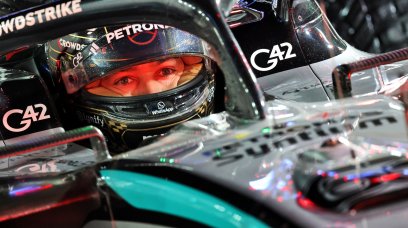Mercedes trackside engineering director Andrew Shovlin has explained some of the reasons that led to George Russell being disqualified from the Belgian Grand Prix.
The 50-year-old highlighted multiple factors that together contributed to the British driver and his car coming in 1.5kg beneath the prescribed weight limit during the FIA's post-race checks.
Russell and Mercedes had pulled off an audacious one-stop strategy at Spa-Francorchamps to win from sixth on the grid, crossing the line less than a second ahead of team-mate Lewis Hamilton, who inherited victory.
Shovlin stated that whilst the team was ultimately still trying to understand what had happened, the car can lose a considerable amount of weight over the course of the grand prix - as can the driver.
"Obviously, very disappointing and unfortunate, particularly after he'd [George Russell] driven such a strong race to win from so far back," the British engineer said.
"Right now we're trying to understand exactly what happened. A lot of that involves as getting the weights of all the different components, and the car can lose quite a lot of weight during the race.
"You get tyre wear, plank wear, brake wear, oil consumption, the driver themselves can lose a lot, and in this particular race, George lost quite a bit of weight."
Viewed by others:
Shovlin added that whilst the two Mercedes cars were within 500 grams of each other after qualifying, Russell's personal weight loss during the grand prix, when combined with excessive plank wear and tyre degradation, was ultimately what tipped the scales.
By opting for the one-stop strategy, a decision that was made on the fly during the race itself, Russell's tyres had been worn more than usual for a race-ending compound.
His 34-lap stint was more than Pirelli had predicted achievable, and the vast majority of the field felt the two-stop approach was the optimal strategy.
"Now, the cars started the race the same weight," Shovlin added. "Lewis [Hamilton] and George were both weighed after qualifying, cars within 500 grams.
"George's was the only one that had the problem and it's because things like the tyre wear was much higher.
"It looks like we lost more material on the plank. We'll collect all that data though, look at how we can refine our processes, because clearly we don't want that to happen in the future."
Don't miss out on any of the Formula 1 action thanks to this handy 2026 F1 calendar that can be easily loaded into your smartphone or PC.
Download the calenderMost read
In this article

























Join the conversation!